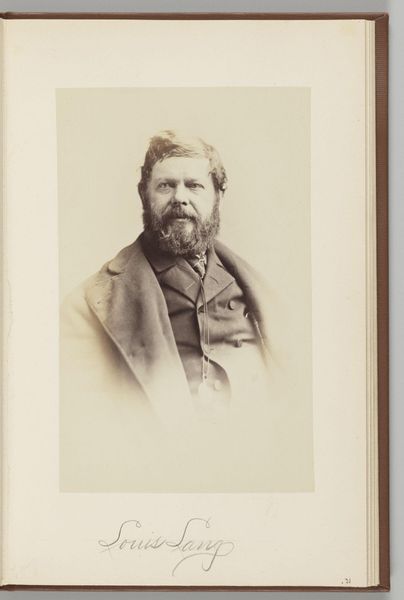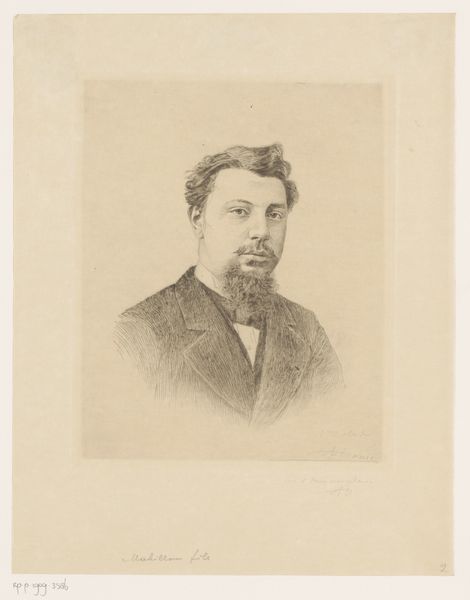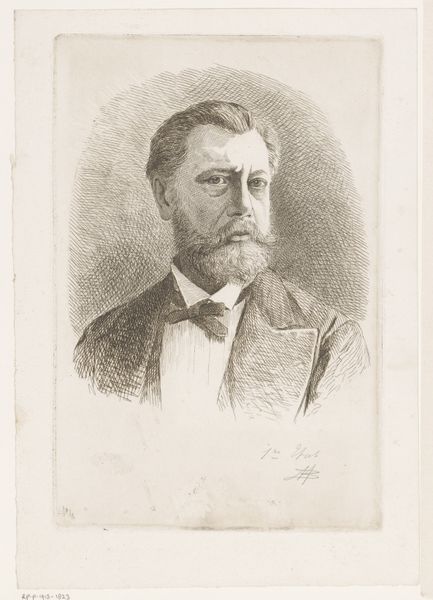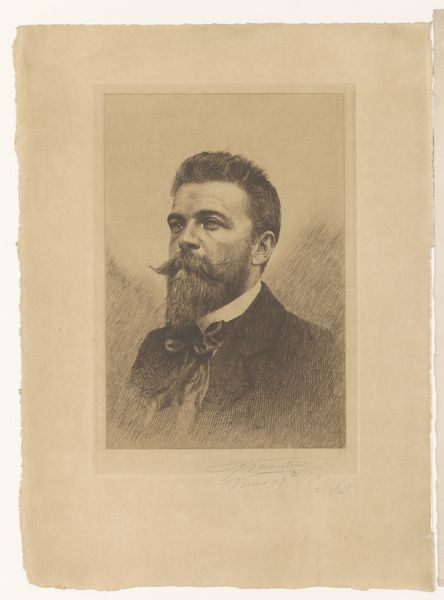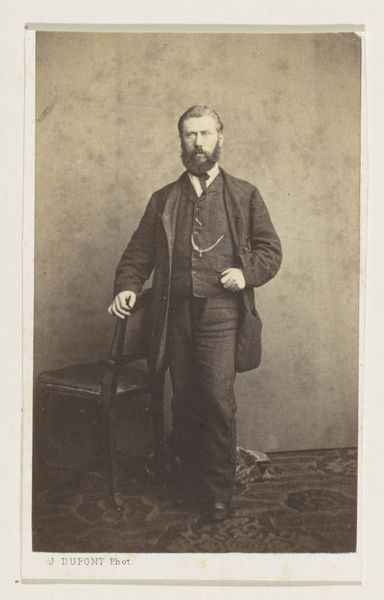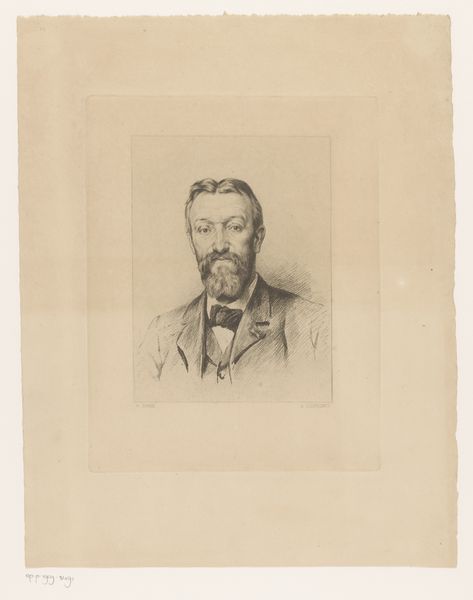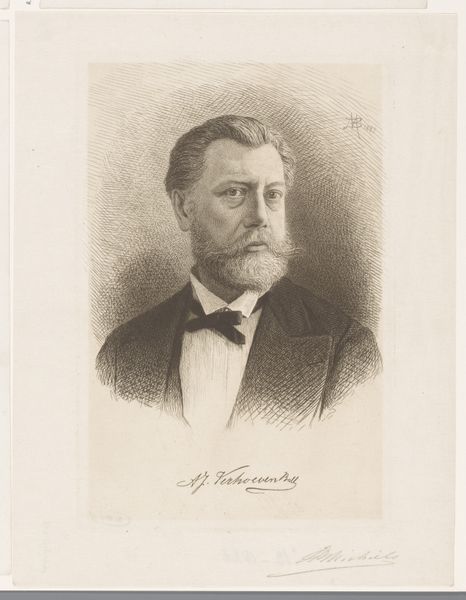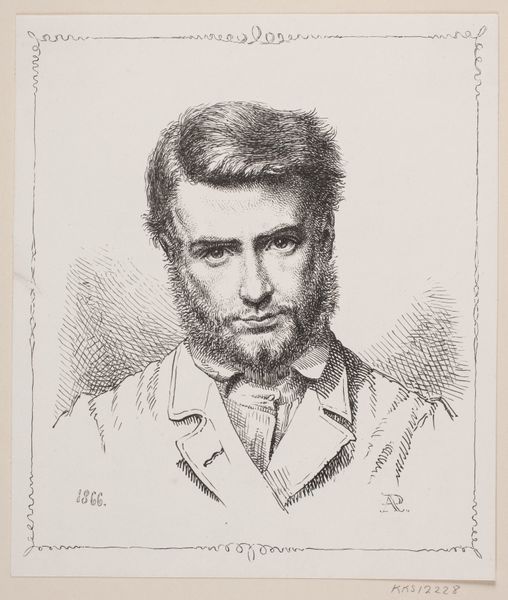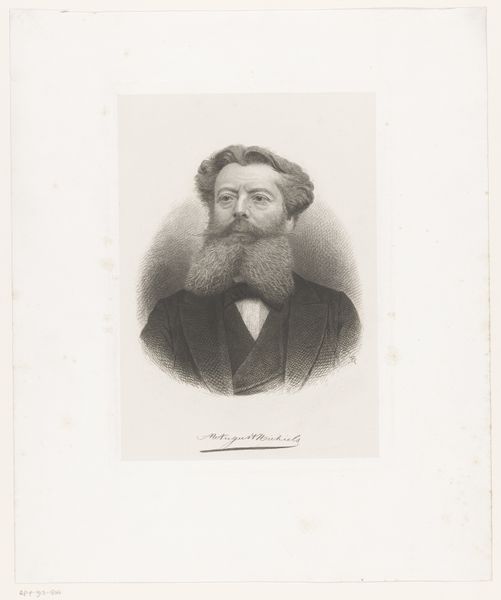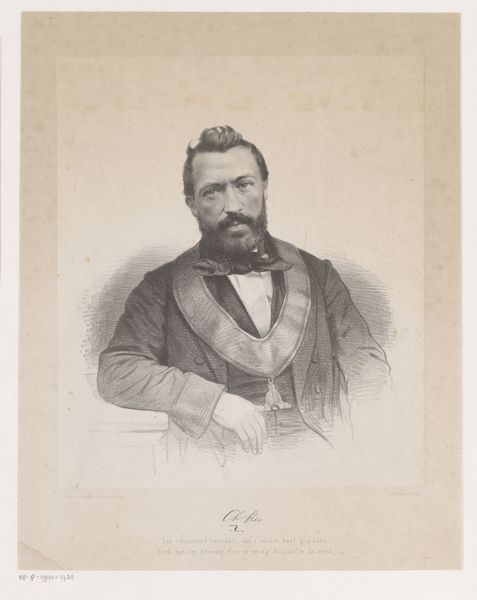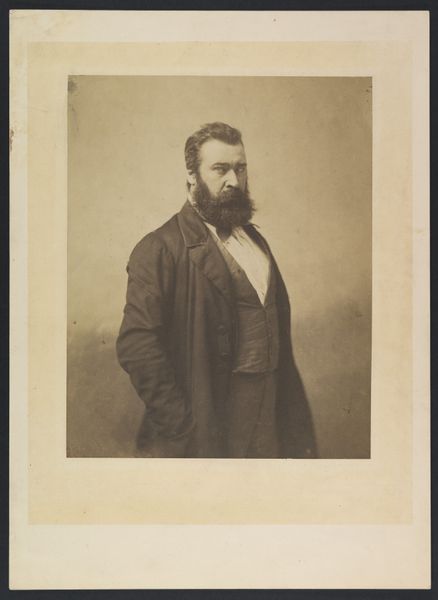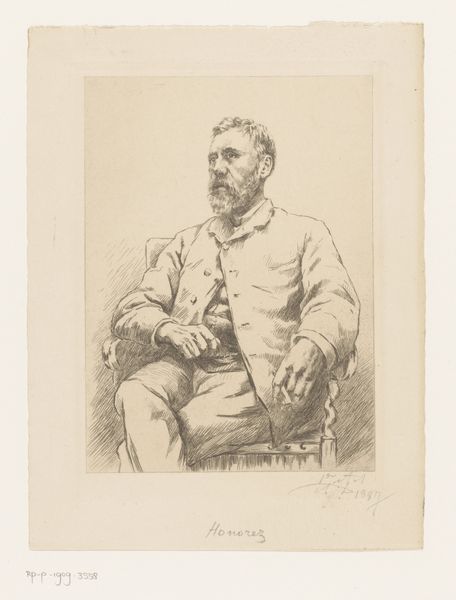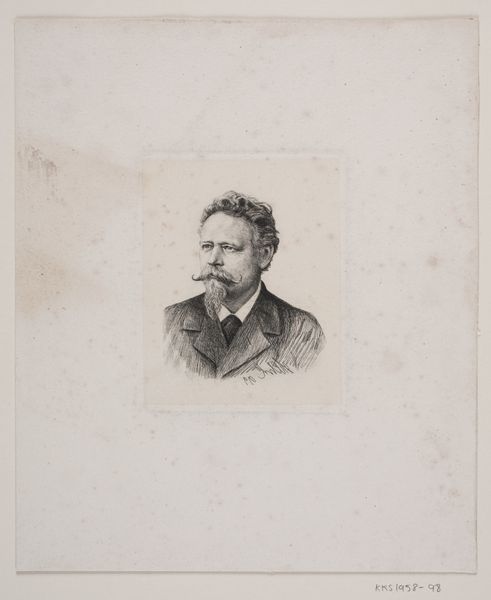
drawing, print, graphite, engraving
#
portrait
#
drawing
# print
#
charcoal drawing
#
pencil drawing
#
graphite
#
portrait drawing
#
engraving
#
realism
Dimensions: height 361 mm, width 239 mm
Copyright: Rijks Museum: Open Domain
Curator: Before us is "Portret van Frans van Kuyck," created between 1864 and 1889 by Frans Lauwers. The artwork utilizes engraving, graphite, charcoal, and print media to capture the likeness of its subject. Editor: The immediate impact is one of substantial presence. He appears a man of considerable intellect, the textures achieved with the printmaking and drawing methods give his form real depth. Curator: Indeed. The artist’s meticulous employment of line creates a remarkable tonal range. Notice how the hatching defines not just form, but also texture. The treatment of the coat versus the waistcoat, for instance, differs significantly, informing our understanding of the materials depicted. Editor: Precisely. Thinking about those materials--the paper substrate, the inks and graphite. There's a history there of labor and artisanal craft that often gets glossed over in discussions of 'high' art. Was the paper handmade? What kind of press was used? These details affect the final image profoundly. The availability and cost of the raw materials certainly shaped the final image. Curator: A valid point. And to follow, I’d suggest considering Lauwers' placement of the figure within the pictorial space. The portrait adheres to certain conventions – the three-quarter pose, the considered gaze – but with the book adds a semiotic depth to the character: his intelligence, a certain professional disposition. The artist isn't simply rendering a likeness; he's constructing an image imbued with meaning. Editor: Agreed. And in addition to being a thoughtful representation of Kuyck's identity, we might think about who produced this image and for what audience. These kinds of prints were often made for mass reproduction. So, its materiality allows us to ponder this tension between the uniqueness of art versus accessible commodities. Curator: Ultimately, analyzing the relationships among its visual elements provides an elevated perception into the intended artistic and representational choices by the artist. Editor: In reflecting on it as a material object rooted in a very specific historical context it takes it beyond formal exercises in lines and tonality. I leaves me intrigued.
Comments
No comments
Be the first to comment and join the conversation on the ultimate creative platform.
